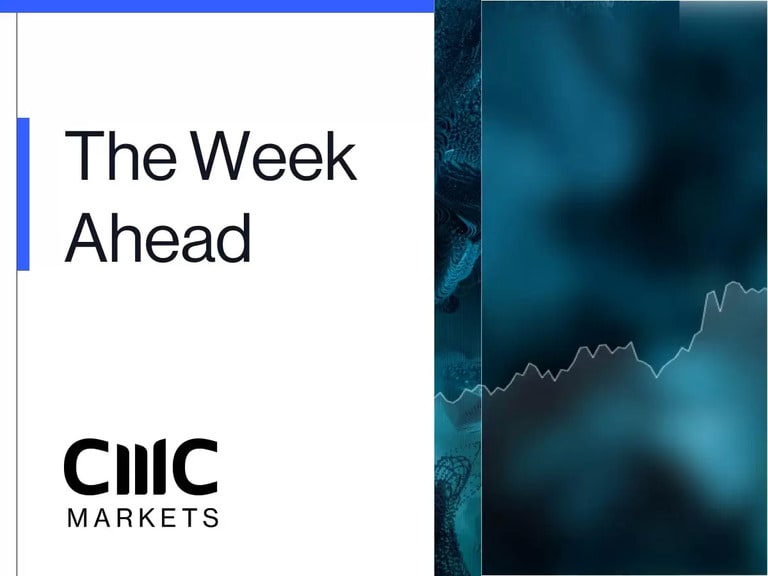It’s been another day of losses for European markets with the FTSE 100 closing lower for the sixth day in a row and matching its worst losing streak since October last year, as well as revisiting its March lows. The DAX has also had a poor week as it looks to close in on its July lows as well as its 200-day SMA.
Europe
This week’s market weakness has been primarily driven by Asia markets, the Hang Seng finishing the week down 5.9% and closing in bear market territory, as China’s Evergrande filed for bankruptcy protection in a US court overnight. Worries about the solvency of its sector peer Country Garden haven’t helped either, along with worries over contagion to the shadow banking system, after Chinese asset manager Zhonghzi missed a coupon payment, has added to the uncertainty.
Combined with the likelihood of persistently higher yields after the publication of this week’s Fed minutes, and markets look set to post their worst week since March.
Today’s biggest fallers on the FTSE 100 have been the likes of JD Sports, B&M European Retail, Frasers Group and Marks & Spencer, after retail sales declined by -1.4% in July, matching the biggest fall this year, which happened in March.
Despite today’s weakness these retailers have still managed to outperform the wider market, all finishing higher on the week with Marks & Spencer leading the gains, after the retailer updated its profit forecasts earlier this week. While this week’s news has been dominated by the collapse of Wilko, other retailers are doing well, and have been adapting to the challenging economic environment.
US
US markets have continued to look soft, opening lower on the back of continued weakness in European markets, and set to post their worst weekly run of losses since February.
Tech stocks have been especially sensitive to the recent rise in yields with Apple shares on course for their worst run of weekly losses this year, down for the third week in a row, while Microsoft shares are on course for the 5th successive weekly fall.
On the earnings front agricultural machinery maker Deere has raised its full year profits outlook after reporting Q3 results that were stronger than expected. Full year income is forecast to come in just shy of $10bn on the upper end of expectations, up from $9.5bn when it updated its outlook 3 months ago.
Sales for Q3 came in at $15.8bn, while profits came in at $10.28c a share, aided by a big jump in precision agricultural machinery as well as construction and forestry sales.
Chinese electric car maker Xpeng shares have plunged after reporting a bigger than expected loss for Q2, and margins came in negative at -3.9%, although vehicle deliveries came in better than expected at 23,205. For Q3 Xpeng estimated deliveries of 39k to 41k and lower than expected revenues of CNY8.5bn to CNY9bn Nio is also lower.
Other Chinese shares are also under pressure, as concerns over the domestic economy increase, with Alibaba and JD.com on the back foot.
FX
The US dollar has been a notable outperformer this week, helped by the more hawkish outlook for US rates, and underlying resilience of the US economy, which has prompted an uplift in longer term US yields, as investors price in the prospect of higher rates for longer.
The pound has slipped back today, giving up most of its gains for this week after the wet weather in July turned out to be a bigger than expected drag on UK retail sales which fell -1.2%, on a volume basis, although it was still the first monthly decline since March.
Clothing and food store sales were especially weak given the change in the weather from the June heatwave. What was particularly notable was that while the value of sales rose, volumes fell back furthering the divergence of previous months, as consumers spent more to get less. Online sales, on the other hand saw an increase to 27.4% up from 26% in June, with non-store retailing not even close to offsetting the declines in food and non-food stores.
The worst performers this week have been the commodity currencies on concern about the outlook for the Chinese economy, and the problems within its commercial real estate and shadow banking sector, which it is felt are likely to weigh on demand over the next few months.
The Norwegian Krone, Australian dollar and Canadian dollar are all sharply lower.
Cryptocurrencies have also been falling sharply as higher yields reduce the attractiveness of these highly speculative assets, with bitcoin hitting its lowest levels since June, and Ethereum hitting its lowest levels since March.
Commodities
After 7 weeks of gains, crude oil prices look set to post their first weekly decline since June, as rising concerns over economic weakness in China outweigh the risks from tighter supply. The increase in prices since the June lows has raised concerns about overly sticky inflation, however according to reports from Kpler Chinese imports of oil have seen a big increase in the past few weeks which could also help keep a lid on
Gold prices hit their lowest levels since March this week, and have dropped below their 200-day SMA for the first time this year, and their fourth successive weekly decline, as the market shifts its thinking on longer term premiums on rate markets. With long term yields heading back to 2008 levels and inflation looking as if it may be coming down, the rationale for owning gold looks set to diminish further.
Volatility
Wal-Mart may have posted some upbeat earnings and outlook news on Thursday, but investors were quick to take profits off the idea that broader consumer confidence still remains weak. The underlying fell by more than 3% from early session highs, leaving one day vol in the $400 billion company to stand at 49.45%, more than double the one month reading of 24.05%.
Conversely at Cisco, potential AI revenue forecasts may have been seen as underwhelming, but news that the company was winning market share along with upbeat analyst notes ultimately proved sufficient to bolster the stock. Earnings were issued on Wednesday evening with the shares trading around the $53 mark before popping to almost $56 on Thursday morning. Around half the gains were given back, leaving one day vol at 45.7% against 26.85% for the month.
Digital asset prices had a lively day on Thursday, with heavy selling of Bitcoin driving prices lower across the asset class. There’s no one single story behind the move, but wider economic woes and news that a significant holder may have liquidated their entire position are on the table. BTC vol printed 91.42% on the day and 33.24% on the month, but Litecoin was even more pronounced, with daily vol of 234.66% against a one month reading of 79.99%.
And a surprise decline in Australian employment was sufficient to see elevated levels of price action on both the ASX and the Aussie Dollar on Thursday. The benchmark equity index slipped around 1% in early trade with daily vol of 13.52% against 11.47% for the month, whilst AUD/USD tested fresh lows for the year, with one day vol of 11.95% against 11.27% for the month..
Disclaimer: CMC Markets is an execution-only service provider. The material (whether or not it states any opinions) is for general information purposes only, and does not take into account your personal circumstances or objectives. Nothing in this material is (or should be considered to be) financial, investment or other advice on which reliance should be placed. No opinion given in the material constitutes a recommendation by CMC Markets or the author that any particular investment, security, transaction or investment strategy is suitable for any specific person. The material has not been prepared in accordance with legal requirements designed to promote the independence of investment research. Although we are not specifically prevented from dealing before providing this material, we do not seek to take advantage of the material prior to its dissemination.






